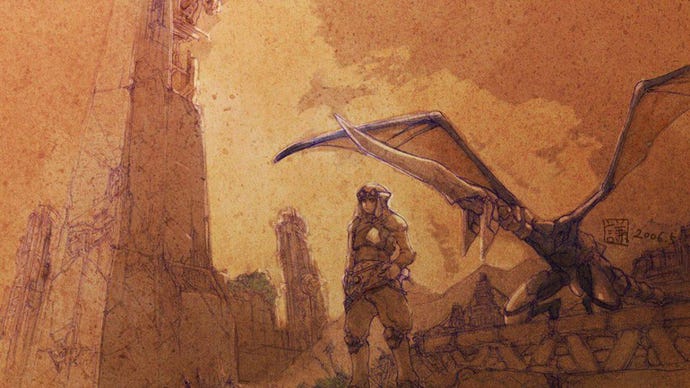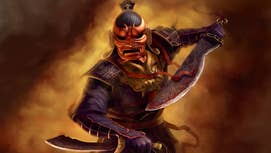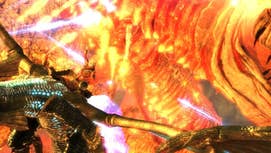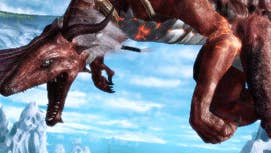The Big Panzer Dragoon Interview: "It Really Makes Me Think Again About How Incredible Sega Was at the Time"
We dove into the whole Panzer Dragoon series with creator Yukio Futatsugi and art director Kentaro Yoshida.
This article first appeared on USgamer, a partner publication of VG247. Some content, such as this article, has been migrated to VG247 for posterity after USgamer's closure - but it has not been edited or further vetted by the VG247 team.
Panzer Dragoon was first released on the Sega Saturn in 1995. A blend of RPG-style storytelling, 3D graphics, and on-rails shooting, the first Panzer Dragoon is considered to be ahead of its time. But the series evolved with the release of Panzer Dragoon Saga, a fully 3D JRPG that those lucky enough to have played it consider one of the best JRPGs of all time.
Prior to the recently announced Panzer Dragoon remakes, the series has lain mostly dormant. It doesn't help that the most legendary of the Panzer Dragoon games, Panzer Dragoon Saga, is a rare relic at this point, available for thousands of dollars on the collector's market. But despite nearly a 20 year hiatus, fans hold a candle for Sega's dark fantasy RPG series. A series that utilized modern 3D graphics and slick shooting at least a decade before the technology was good enough to handle either particularly well.
At GDC 2019, we got a chance to sit with Panzer Dragoon series creator Yukio Futatsugi and art director Kentaro Yoshida to discuss the legacy of Panzer Dragoon, and uncover some secrets from the series' development. Everything from competing with the PS1, to the original story for the Panzer Dragoon games.
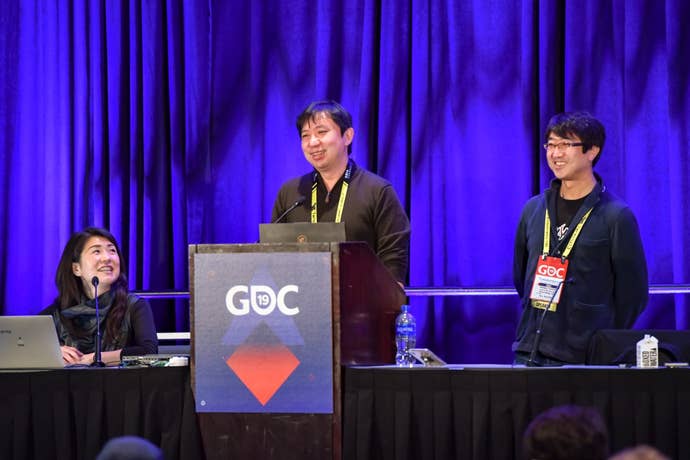
Panzer Dragoon
USG: Panzer Dragoon is a series that lived on the Sega Saturn from beginning to end, [as Panzer Dragoon Orta was released on the Xbox in 2002 with many of the same developers, but not Futatsugi]. What are your thoughts on developing the series for that platform at the time?
Yukio Futatsugi, series creator: For Panzer Dragoon, the Saturn was this brand new hardware, so that was exciting. At the time there was also this feeling going around where, well, Virtua Fighter 1 had done really well and [Virtua Fighter] 2 was coming out soon. So, we were kind of thinking like, 'We might actually be able to take out the PlayStation.'
We were thinking that a Sega hardware might actually take out the PlayStation 1. At the time we were developing [Panzer Dragoon] Zwei and Saga at the same time, and when we were doing that, we were obviously aware that the Saturn's time was coming to an end. So, it was sort of a very mixed feeling for the series coming to a conclusion in that respect.
When we were working on Saga, everyone was super motivated, super jazzed. You can't make a game like that without motivation. Of course, by that point in time we had seen the Saturn rise and then fall again. So, there was also that.
Kentaro Yoshida, art director: I was mostly just involved with Panzer Dragoon and Zwei. So, for when I was working on Zwei, there were all these [technical] things I [could do that I] wasn't able to with [Panzer Dragoon] 1. What are things we could integrate to make it into a more fun shooting game. I wasn't really involved in Saga, but I was able to sit to the side and observe all the troubles they were having.
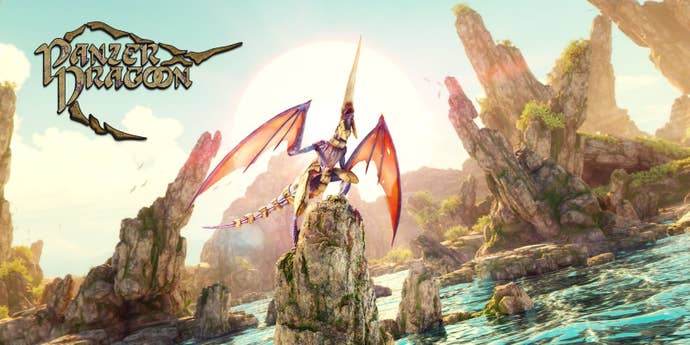
The Panzer Dragoon game that debuted on the Sega Saturn really was ahead of its time. Do you both wonder what it would be like to make a current-gen, or even next-gen Panzer Dragoon game?
YF: Obviously if we were to make it now, we'd have to integrate all sorts of modern trends into it. So, it would end up being a different kind of game. Part of me is also like, maybe we don't need to make a new one.
So of course, looking back on the game now, it had a very unique world to it, unique look. So, it would be nice to make something along those lines. Basically, if it's copying the work, we've already done then we wouldn't need to make a new one.
Were there ever plans to make a Panzer Dragoon game for the Dreamcast?
YF: At the time neither of us were at the company. By the time we were making Orta on the Xbox, that's when Yoshida-san was back at Sega. So, if there were discussions about making Panzer Dragoon during the Dreamcast era we wouldn't know anything about it.
I read in a fairly old interview with Mr. Futatsugi that Panzer Dragoon's world and lore had only been 1/5 realized. Care to elaborate on that?
YF: At the time we had a pretty long period where we could just think about the world of Panzer Dragoon. So as we were building that up it came time to actually develop it. So we said, 'Okay we'll just take this one part of what we made and turn that into a game.' So I'm sure there was a lot more we had in mind at the time. But, for example, if something were to happen on our end now I'd probably just throw that all away and think of something else.

Panzer Dragoon Zwei
Panzer Dragoon and Zwei was developed with a team of around 15 people. That's the size of a small indie studio in today's era. What was it like developing a unique game like Panzer Dragoon with a small team?
YF: Actually on Saga, the team size for that was about 50 which was quite unusual at the time. Nowadays there are ways to manage a team of that size with tickets. But back then it was a bit more difficult to manage that many people.
So, what was the most memorable thing about development during Panzer Dragoon and Zwei when the team was smaller and working on this new IP?
KY: I remember it as being a pretty fun experience. At the time when it was this small group it was about half arcade veterans from the Sega arcade team and half brand new folks like me and Futatsugi-san. It was a challenge to ourselves to prove that we could work just as hard as the people who had been there for a long time.
YF: One thing that really stuck with me with the team that we had was everyone was really unique, and they had their own quirks of course. But we really had this atmosphere where we could talk about anything. If there was something that needed to be talked about, we could just hash it out. That's what I remember most about the team.
I read in earlier interviews that there were a lot of non-video game influences for Panzer Dragoon, such as the anime film Nausicaa and the Valley of the Wind. What other works of art went into influencing Panzer Dragoon?
YF: Dune was a pretty big influence. For example, if you look at the desert levels there are sand worms. And that's all very much pulling from Dune, I think. There is a character in Dune, Count Hakone? Possibly, I'm not sure what his English name is, but the image we drew on for the emperor relied on him a lot.
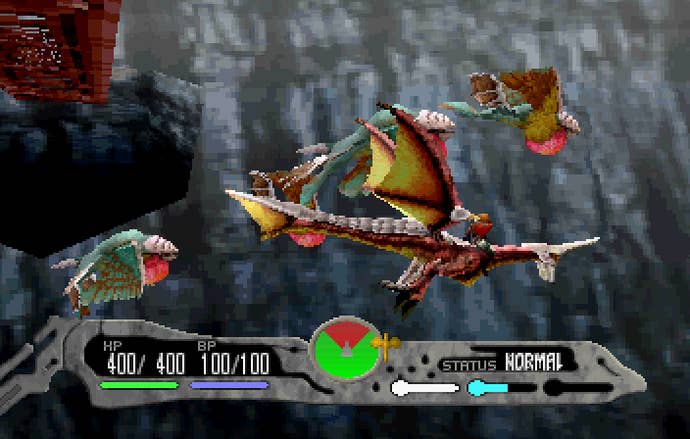
Panzer Dragoon Saga
So Panzer Dragoon, Zwei, and Panzer Dragoon Orta are all fairly accessible in this day and age. You can get a copy of these games quite easily. But I don't know if you're aware that Saga is very hard to come by. Last I checked, an original copy for Saga goes for like $2,000 on eBay. Those who have played it consider it one of the best RPGs of all time. How do you feel knowing there are generations of players who might not be able to play this game because of how hard it is to come by?
YF: Even if there's not a remake of Saga, it'd be great if there was some sort of way for people to play the game we already made. Obviously that's up to Sega, so that's not really in our ballpark since the game did come out at the end of the Saturn's life cycle there weren't that many copies printed, especially in the west. And I actually quit before the game mastered up. So I only really heard how much it sold after the fact. But there was the recent news about the remakes of one and two. So, it'll be great if something also happens for Saga to make that accessible.
Hypothetically let's say that never happens and Saga is destined to become this long-lost relic. How do you feel about developing a game that becomes a forgotten treasure?
YF: I kind of feel two ways about it. Obviously, I want as many people as possible to play what we've made. But as part of this presentation we've made for GDC, I went back and pulled out a copy and, well, I made it 20 years ago and I was really young at the time. So there's all sorts of things where, "I wish I had done something better with this. Like this really isn't all that good." Really, if something were to happen it'd be great if there were some kind of remake for it because there's a lot of stuff in there that was, uh, of its time.
KY: We worked on the script for the GDC presentation together, so we were looking at the game as we were writing it and we're like, "oh man this resolution is so low."
Panzer Dragoon's 3D graphics really were advanced for its time. Was there ever a time in development where a hurdle felt too high, and maybe the vision was too advanced for what was capable on the Saturn?
YF: One thing about working on the Saturn is we really didn't have that many polygons to work with. So, we would take out our concept art and we look at the things we were trying to make but there would be difficulties on the performance side. Even going into Zwei where we had stages with forests and stuff like that, there were just a lot of things that were restricted by the Saturn.
How did you overcome some of these limitations?
YF: One person we have to thank in this entire process is an extremely talented programmer named [Hidetoshi] Takeshita-san. So, for most of the game's life it was moving at like 15fps. But later on, when we were developing the Saturn, we increased the number of CPUs. So, it was one and then went to two. But even if you had more CPUs, unless you actually have a way to make good use of that, it's never going to make a difference. So right until the very end of development, we just barely made it, our programmer made a library that took advantage of that second CPU, so that brought the FPS up to a point that really, it moves in a way that looks good.
YF: [To Yoshida] Do you remember the very first build we had on the hardware?
Futatsugi makes a motion with his hand to simulate a model moving at very low fps, lagging and bugging out.
YF: The programmer once asked me, "This is going to get faster, right?" And I said, "I heard it's going to get faster in the next dev kit, so maybe?"
There was quite a bit of rivalry between Sega and Sony during the time, and with franchises like Final Fantasy. Could you share some stories about what it was like working on Panzer Dragoon Saga during this time against rival RPG games?
YF: Well Final Fantasy 7 came out before Panzer Dragoon Saga, but we were also doing different things. Final Fantasy 7 was in 3D, but it still had this Resident Evil-style 3D. Saga was fully 3D so we were doing different things to begin with.
I heard there were some financial troubles at Sega U.S. that prevented parts of Saga's ending from being translated. I'm unable to verify since I don't have $2,000 to buy a copy of Saga, but is that something you've heard?
YF: While I don't think that would be possible, one thing I do remember from the localization that—I was there when we started and towards the end Takeshi-san took over for me—was there were spots that were changed in localization. There was an American fella who told me that such a minute expression will not communicate well in English. So we did change parts like that. But if there were parts in the American release of Saga that are still in Japanese, that's probably just a bug.
Actually, one thing I do remember about the translation is that for the English release the relationship between Edge and Azel was changed. That it was too ambient for English-speaking audiences. Any comments on that?
YF: In Japan we love to communicate a lot of things through the atmosphere. So we leave things unsaid, but they're still being communicated. Whereas in America things really need to be said straight out. So, there were some spots in there where lines were changed.
The Untold History of Japanese Video Game Developers author John Szczepaniak said in an interview that Panzer Dragoon Saga is comparable to modern games like The Witcher and Metal Gear Solid. Do you have any thoughts on those kinds of comparisons?
YF: I wasn't aware those kinds of discussions were going on. But one thing I think where that might be coming from is that when we were making Saga we were doing a whole lot of things that were ahead of their time—things that are taken for granted today were things we were doing for the very first time back then. And so, if you look at when the game came out, we were doing all sorts of things that really, we should have been doing on the next generation of hardware.
When we were making it, we were sort of talking to each other like, "We can't actually do this, can we?" And then the people were at Sega were all extremely talented. They said, "No, if we do our best, really knuckle down, we can do this."
So, we were doing all sorts of things that we really weren't supposed to be doing yet that we did anyways. When you're young you don't really think about what your limits are. You think the best that you can do is probably the best that anyone out there in the world is capable of. What really made [Panzer Dragoon] possible was that Sega at the time had an environment that made that kind of feeling possible with all the talented people they had. It really makes me think again about how incredible Sega was at the time.
So that probably explains why when people look at these modern games, they can compare with Saga and say, "Oh, there was this old game doing that as well." Because it was sort of like bucking this trend and getting ahead of it.
Szczepaniak was also referring to how Saga was advanced in terms of storytelling and themes. And I believe it was Mr. Yoshida who told Polygon in their Panzer Dragoon oral history that he considered Team Andromeda at Sega kind of like punk rockers. Could you elaborate on that?
YF: When we talk about the story for Saga, I discussed a lot with [Manabu Kusunoki, chief designer of Panzer Dragoon] and there were actually a lot of things where we were like, "we gotta make [Panzer Dragoon] even more punk." And we would eventually dial it back like, "Maybe we shouldn't go that far."
So, there are a lot of things that we gave up on because of that. But looking back on the game now as an adult with an adult's judgment, there's a whole lot of things that I think we went and done as it were.
Well now I'm curious. What were some of the things you dialed back on during development?
YF: One thing–I'm not really sure if I should say this but I'll go ahead and do it anyway. One idea we had was that the Panzer world, the whole world of Panzer Dragoon itself, was actually just a dream a salaryman was having. And so eventually the two worlds would start to mingle and then mix at certain points.
For example [the salaryman would] be riding the Yamanote line to Tokyo and he'd look out the window and see a dragon flying there. So, we sort of had that idea we were running with, but we eventually gave up on. But there is sort of like small elements of that that you can still see in the ending to Saga.
Panzer Dragoon is currently being remade for the Nintendo Switch.
